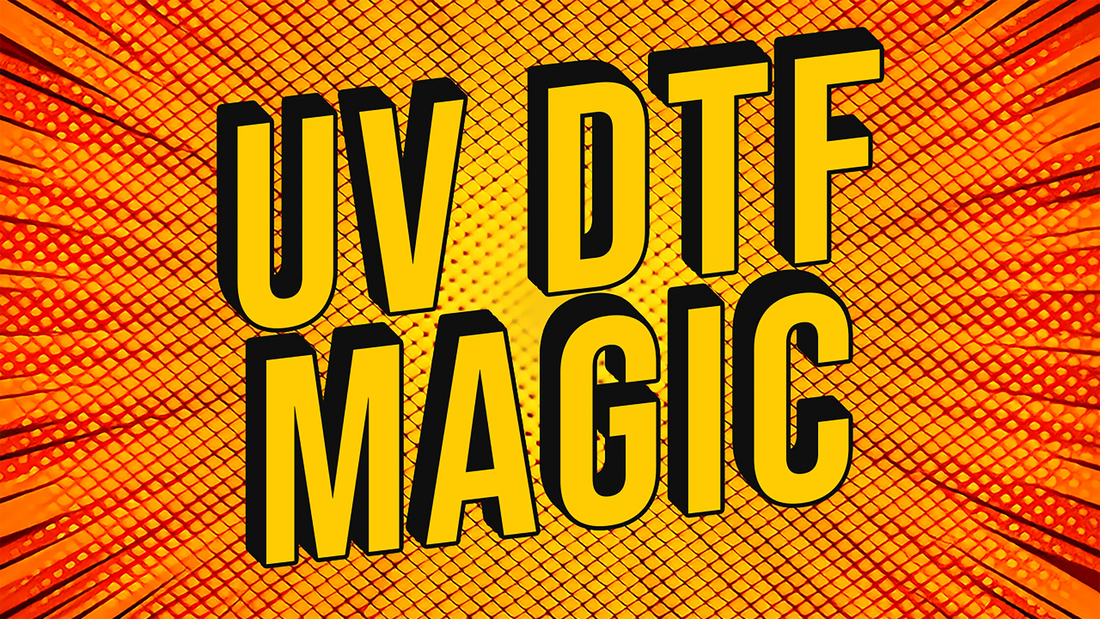Why UV DTF Outshines Direct-to-Film: Key Benefits & Quality Insights

Advantages of UV DTF Over Direct-to-Film

UV DTF (direct to film) transfer printing is an innovative technology that is transforming the print industry. This digital printing method allows for the transfer of UV-cured inks onto a variety of materials and surfaces using a flatbed UV printer and specialty transfer media. For print providers and business owners, understanding the benefits and limitations of UV DTF can help determine if it is the right solution for their needs. This comprehensive guide examines the key advantages and disadvantages of adopting UV DTF technology.
Key Takeaways
- UV DTF Transfer Printing: UV DTF (direct to film) transfer printing is a cutting-edge technology that allows the transfer of UV-cured inks onto various materials and surfaces using a flatbed UV printer and specialty transfer media.
- How It Works: UV DTF involves printing UV-curable inks onto a coated transfer media, transferring the design onto the final substrate using a heat press, and curing the ink with LED UV lights in the heat press for a durable finish.
Advantages of UV Printing
- Print on Any Material: UV DTF enables printing on a wide range of materials, including metals, wood, plastics, glass, ceramics, leather, textiles, and even 3D objects.
- Exceptional Print Quality: UV DTF produces high-resolution, vibrant, and durable prints with no color shifting or banding.
- Durability: Prints are scratch, chip, and fade resistant, making them ideal for long-term use.
- Cost Savings: Lower costs in the long run, as it eliminates recurring costs and is well-suited for short runs.
- Quick Turnaround: Jobs can be completed in hours or days, thanks to an efficient digital workflow.
- Sustainability: UV DTF is a cleaner and more eco-friendly printing process.
- High ROI: UV DTF can improve business efficiency, capacity, and profitability.
- Wide Applications: It opens up new possibilities for various applications beyond traditional signage and graphics.
Disadvantages of UV Printing:
- High Initial Investment: The upfront cost of UV DTF equipment can be significant.
- Learning Curve: Operators need training and expertise to achieve optimal print quality.
- Limited Size: The maximum print size is constrained by the printer's flatbed dimensions.
- Texture Limitations: UV DTF works best on smooth, flat surfaces, and printing on highly textured surfaces can be challenging.
- Setup Experimentation: It may take time to optimize print settings for different materials and substrates.
- Consumable Costs: Transfer media is an ongoing consumable expense.
-
Key Considerations Before Investing: Businesses considering UV DTF should evaluate their client base, staff skills, facility requirements, cost per print, ramp-up time, and marketing efforts.
How UV DTF Transfer Printing Works
UV DTF transfer involves printing UV-curable inks onto a coated transfer media using a flatbed UV inkjet printer. The printed design is then transferred onto the final substrate using a heat press. The transfer media acts as a carrier between the printer and the substrate. Once transferred, the ink chemically bonds to the material for a permanent, durable finish.
The UV DTF process consists of three main steps:
- Printing - The design is printed in reverse onto a coated transfer media using a flatbed UV printer loaded with UV-curable inks.
- Transfer - The printed media is placed onto the substrate and run through a heat press. The combination of heat and pressure causes the ink to release from the transfer media and bond to the final surface.
- Curing - The transferred ink is cured instantly using LED UV lights in the heat press, creating a permanent bond between the ink and substrate.
UV DTF allows printing directly onto the transfer media, eliminating the need for films or plates. The system prints, transfers, and cures in one seamless digital workflow.
Pros and Cons of UV DTF Printing
Pros of UV Printing
Transitioning to UV DTF transfer can offer print providers significant advantages:
- Print on Almost Any Material: The UV DTF process enables printing on a huge range of materials that cannot be screen printed.
- Exceptional Print Quality: UV DTF printing produces stunning image quality with vibrant colors, crisp details, and smooth gradients.
- Durability and Scratch Resistance: UV-cured inks form a durable bond with substrates at a molecular level.
- Lower Costs: While the initial equipment investment is significant, UV DTF provides major cost savings in the long run.
- Quick Turnaround: Jobs can be turned around in hours or days rather than weeks.
- Sustainable Process: UV DTF is a cleaner and more eco-friendly printing process compared to screen printing.
- High ROI: The combined benefits of lower costs, faster speeds, and higher margins can result in rapid return on investment.
- Wide Applications: UV DTF opens up a vast range of new applications that are either impossible or impractical to produce using traditional print methods.
Cons of UV Printing
While having many strengths, UV DTF does come with some downsides to consider:
- High Initial Investment: A new UV DTF printer costs $150,000 to $300,000 to purchase.
- Learning Curve: Achieving optimal print quality requires expertise in various aspects of UV DTF printing.
- Limited Size: The maximum print size is constrained by the dimensions of the UV printer's flatbed.
- Texture Limitations: The UV DTF process works optimally on smooth, flat surfaces.
- Setup Experimentation: It takes testing and adjustment to dial in the optimal print settings for each new transfer material and substrate.
- Consumable Costs: The transfer media itself is an ongoing consumable expense.
Key Considerations Before Investing in UV DTF
For print businesses exploring the technology, here are some important factors to keep in mind:
- Existing Client Base: UV DTF is best suited for companies with clients wanting short runs, customization, speed, and high quality.
- Staff Skills: Operators need a technical aptitude and willingness to learn the nuances of digital UV printing.
- Facility Requirements: A UV DTF printer requires climate control, electrical power, exhaust ventilation, and UV safety protocols.
- Cost Per Print: While efficient for short runs, consumable costs make UV DTF less competitive for higher volumes.
- Ramp Up Time: It takes time to become fully proficient in operating the printer and heat press at production speeds.
- Marketing: Clients may need education on UV DTF's capabilities to generate demand. Printers should showcase the technology's advantages through samples and prototypes.
The Future of UV DTF Printing
UV DTF transfer is one of the most promising digital technologies to enter the print industry in years. For businesses able to make the investment, it provides a major competitive edge.
As equipment costs continue to fall, adoption rates will accelerate. UV DTF enables new applications in packaging, product customization, and on-demand manufacturing.
Ongoing developments are expanding the size limits, speed, and material versatility of the process. Hybrid workflows combining UV DTF with other print methods will also increase.
UV DTF allows printers to transition from being strictly service providers to becoming strategic partners helping clients innovate. While still an emerging technology, UV DTF transfer printing has huge potential to transform business models across multiple industries.
Conclusion
UV DTF transfer printing offers numerous advantages, including the ability to print on a wide range of materials, exceptional print quality, durability, cost savings, quick turnaround, sustainability, and a broad array of applications. However, it comes with limitations, such as a high initial investment, a learning curve, and texture constraints. Businesses considering UV DTF should carefully assess their needs and resources before making the investment. As equipment costs decrease and the technology continues to evolve, UV DTF transfer printing holds the potential to transform business models across various industries, making it a promising addition to the print industry's arsenal.
For a thorough understanding of how to heat press DTF (Direct to Film) transfers, explore our in-depth Step-by-Step Guide for comprehensive details and expert insights.
